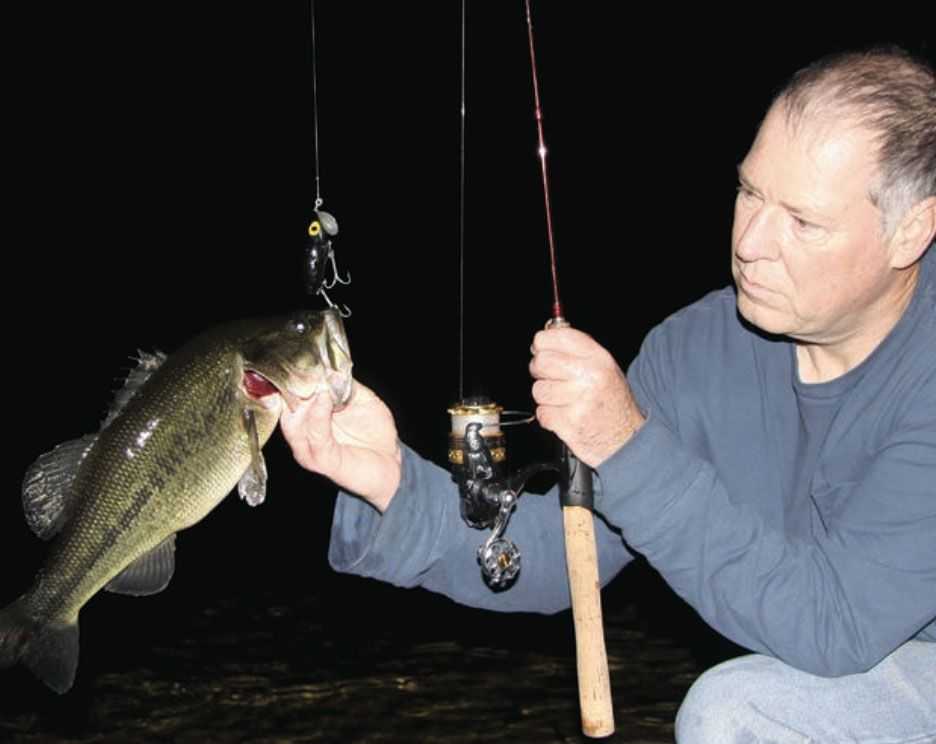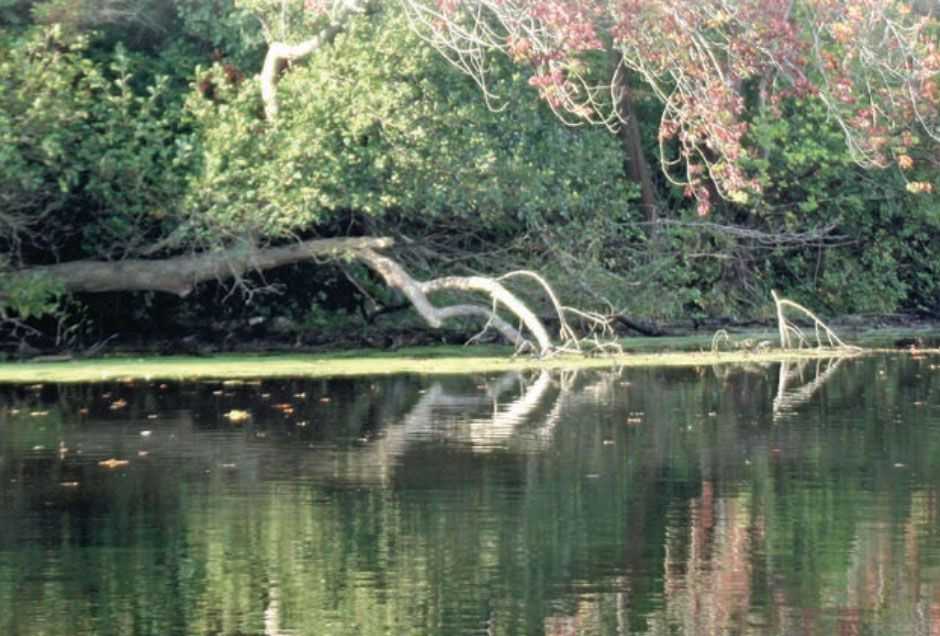I don’t know about you, but bassin’ season just couldn’t get here fast enough for me this year. Like many bass fans, I imagine, I’m all pumped up and ready to go. No doubt, I’ll fish hard and score well in the first few days of the season simply because the bass are willing and I’m running on adrenaline. Still, there are a few points I try to keep in mind to help push the reset button whenever the action starts to slip. Keeping these in mind will help you stay on top of your game as well.
GET OUT AND WADE
It’s hard to go back to wading once you own a boat, but there is no more intimate way to learn a lake or pond than to wade its perimeter. Wading forces you to slow down, to be quiet and proceed gently so you don’t spook your quarry.
Wade the edge of your favorite hotspots and keep your eyes focused four or five yards ahead of each step. Work along an overhanging line of trees, poke your head inside the canopy and witness the tangle of branches beneath the surface. Note how larger limbs protrude underwater well beyond the surface brush and see first-hand how much additional structure is hidden by the leaves. Hand-pitch a weedless worm to a bass you see locked up back inside the tangles and try to haul it out. In so doing, you’ll see up close and personal how bass use heavy cover for both feeding and flight responses.
Wading also allows you to find and isolate troughs and holes, hidden slopes and shoals, cool-water pockets, and ambush points used by a variety of predator species. It offers the opportunity to work some waters that may not be accessible by boat, especially back cove areas blocked or separated from the main lake by shoals or thick brush.
As you wade, make a mental note of any fishy aspect you discover and you’ll be able to take it all into consideration the next time you cast from a seat. The more you learn about shoreline structure while wading, the more confident you’ll be in your approach. Spend a few trips wading and you’ll also come across enough big bass to convince yourself that, no matter how good you are at the bassin’ game, there is still room for plenty of improvement.
WORK THE GRAVEYARD SHIFT
Let’s face it, most local bass lakes see a lot of pressure during the day. From dawn ‘till dusk during the open season, there seems to always be somebody on the water. Big bass learn to adjust to this pattern, sometimes choosing to feed most heavily late at night – long after most anglers have left the lake.
I’ve shifted a lot of my bass fishing to the late-night time slot over the past few years with great results. Sure, it’s tough to see, hard to ignore the mosquitoes and no- see-ums, and limiting in terms of the lures I can use – but it is also very productive, spooky and quite exciting.
Make it a point to head out after everyone else heads home this season and you may be very surprised by the action you find. Naturally, topwater offerings such as Jitterbugs, Crazy Crawlers, Hula Poppers and soft-plastic frogs will be your main offerings, but on a bright, moonlit night you might also get away a slowly worked buzz bait, plug or even a scented plastic worm.
Work slowly and meticulously along the bank after dark, but occasionally try a few casts offshore around isolated weed mats and lily pads. Fish weeknights and you might fish alone.
REMEMBER TO TWITCH
Most anglers I see working plugs cast out and instantly begin reeling them back. That’s fine if the fish are in an aggressive mood, but incorporating a twitch into your retrieve can often bring strikes from bass that would otherwise turn away.
Floating Rapalas, Rebel, Bomber and Yo-Yo plugs are ideal for twitching. Cast them out, wait until the entry disturbance subsides, and then twitch them ever-so- gently on the surface. On a flat, quiet morning, all you want to do is impart enough motion to turn one of these plugs from north to east. Twitch gently two or three times, then let the plug rest for twenty or thirty seconds. Follow up with a second series of three or four twitches, slightly more vigorous than the first. Allow another thirty seconds and then either reel your lure under or twitch it home at a moderate pace. Oftentimes, bass will watch a gently twitched lure intently, charging it when you change the pace by reeling it under. These same fish might pass up a standard retrieve.
Many anglers don’t have the patience to twitch their lures, seemingly in a hurry to beat other casters to the next bassy-looking lair. Slow down and make the twitch part of every cast, however, and you may begin to pick quite a few fish from waters where others have already worked.
SEARCH FOR GOOD WOOD
Everyone knows that bass love structure, especially the wooden type. No matter where you fish for largemouths, submerged logs, sunken rowboats, floating rafts, dock pilings and overhanging limbs should be primary targets. Keep in mind, however, not all wood is created equal. Learn to seek out the best wood and spend less time casting to the bad.

As a rule, the best wood for holding largemouths has been submerged or partially submerged for several years. Such wood will host considerable weed and bacterial growth, attracting small baitfish and, in turn, larger predators. A single small log in shallow water can produce excellent results early and late in the day, as can a few large submerged planks or an entire submerged tree. A freshly fallen tree, by comparison, may offer little more than passing interest to cruising bigmouths and an opportunity to hang your lure on a limber branch.
As a rule, hardwoods like oak and paper birch generally out-produce softer pines. Pressure treated lumber seems to hold fewer fish than non-treated lumber – making brand new decks less attractive than old, rotting ones. Take the time to seek out and probe the most rickety, lack-luster, decrepit wooden structure you can find as this is the best for holding bass.
Wood that provides shade can be especially productive – even if it is pressure treated. Look for pool decks, porches and patio decks that extend out over the water to hold fish beneath them during the heat of day – even if they protrude over depths as shallow as six inches (naturally, you’ll fish such spots quietly and with utmost respect for the property owner.) Of course, overhanging trees with heavy leaves that block out the sun are also worth a shot, but be aware that bass in such shady waters are often sulking and usually require finesse presentations.

